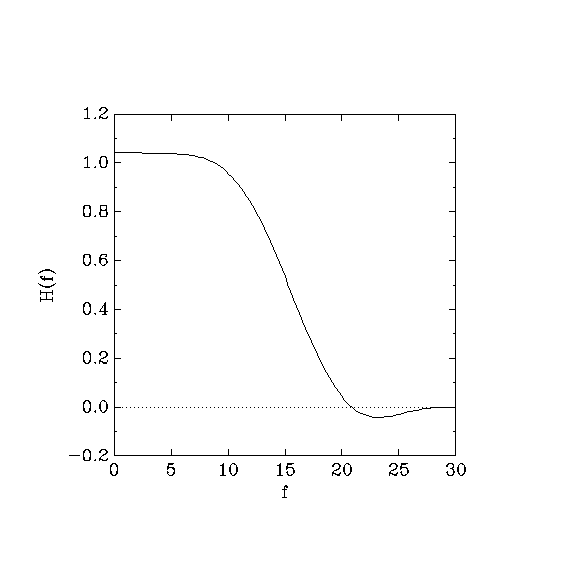
This example introduces concavity constraints. With
gmeteor, you can impose constraints on the second derivative of
the frequency response, in addition to constraints on the frequency
response itself. These constraints are useful because a frequency
response H that is either concave-up (i.e., H” >= 0)
or concave-down (i.e., H” <= 0) in a certain band tends to
be “flat” in that band (i.e., it does not exhibit ripples). (You can
also impose constraints on the first derivative, but they do not appear
to be very useful.)
In this example, we design the low-pass filter from Example 1, but in addition we want a flat passband response. To accomplish this effect, we constrain the response to be concave-down in the passband.
(title "A simple filter V")
(verbose #t)
(cosine-symmetry)
(filter-length 10)
(sampling-frequency 60)
;; magnitude constraints
(limit-= (band 0 10) 1)
(limit-= (band 20 30) 0)
;; This command states that H(f) must be concave down in the passband.
;; In other words, we demand that H''(f) <= 0 for f in the passband.
(concave-down (band 0 10))
(output-file "example-5.coef")
(plot-file "example-5.plot")
(go)
A graph of the frequency response follows.

The expression (concave-down band) specifies that the
frequency response should be concave-down in the band band. The
analogous command ‘concave-up’ does what you would expect.
gmeteor also provides two commands ‘downward’ and
‘upward’ to impose constraints on H'(f).